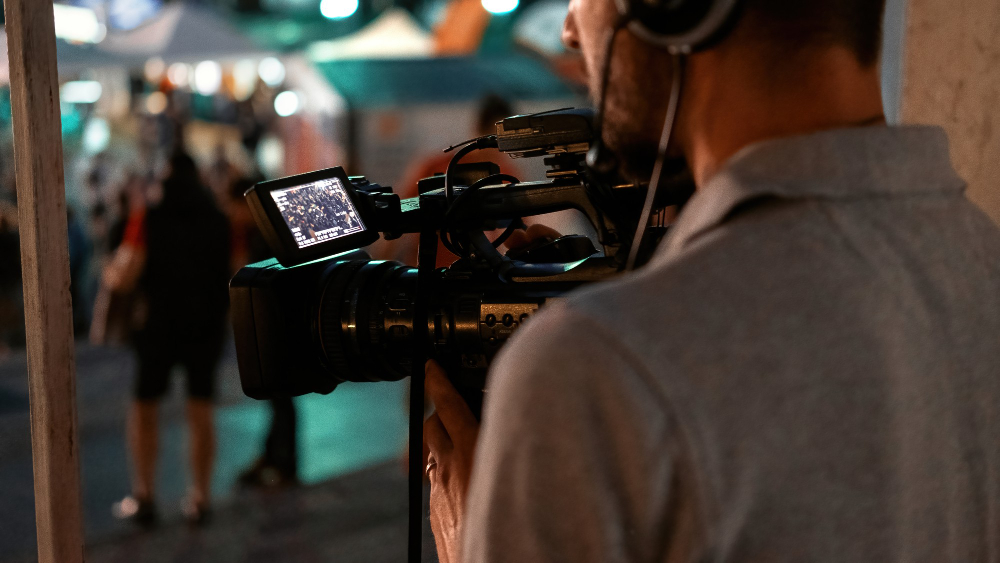In today’s cultural scene, visuals are no longer just supporting elements. They have become central to how we experience and remember moments. Whether it’s a music video drop, the unveiling of a new art collection, or a behind-the-scenes look at a fashion shoot, imagery shapes how we connect with these events. It influences how stories are told and how audiences engage with them.
Awing Visuals, known for its cinematic style, is a reminder of how much thought goes into capturing these moments. Their work shows that intentional, high-quality visuals can turn an event into something that resonates far beyond its original setting. When the camera becomes part of the storytelling, the audience is invited into an experience rather than just shown a snapshot.
Visual Storytelling in the Music World
Music releases have always been about sound first. But in recent years, visuals have taken on an equal role in the overall impact of an album or single. Artists release visualizers, short films, and behind-the-scenes reels that expand on their creative vision. These pieces give fans more than just a track to play. They offer a mood, a narrative, and a context that deepens the listening experience.
Think of a live performance captured with care. The lighting, camera angles, and pacing can make viewers at home feel the same energy as the crowd in the venue. In many cases, these videos become part of the artist’s identity, influencing how the music is remembered.
Art Exhibitions in Motion
In the art world, exhibitions were once limited to those who could physically attend. Now, video coverage and carefully shot photography bring these events to global audiences. The movement of a camera through a gallery can recreate the feeling of walking between works. It can capture the play of light on a sculpture or the texture of a painting in a way that still images cannot.
For curators and artists, this opens up new possibilities. Documenting an exhibition is no longer just archival work. It becomes part of the artistic process, with the video itself serving as a creative interpretation of the show.
Fashion’s Dynamic Side
Fashion has long relied on strong visuals, but the shift toward digital media has pushed the medium further. Editorial shoots now blend photography with video, creating hybrid pieces that feel alive. Social media clips capture the movement of a dress or the personality of a model in ways a single frame never could.
Fashion week coverage is another example. Live streams, recap videos, and designer interviews give viewers a complete experience. They can see the garments, hear the music, and feel the atmosphere of the show from anywhere in the world.
Why Visuals Resonate in Culture
High-quality visuals connect with audiences on an emotional level. They make cultural moments more accessible and memorable. They give context to what is being shared, whether that is a song, an artwork, or a clothing collection.
Here are a few reasons why visuals play such a powerful role in cultural storytelling:
- They set the mood. Lighting, framing, and movement work together to create a feeling.
- They provide context. Viewers can understand the environment, the people involved, and the significance of the moment.
- They enhance memory. A striking image or video clip can stick in someone’s mind long after the event.
The Balance of Art and Documentation
Visual storytellers often walk a fine line between documenting and interpreting. The goal is to preserve the authenticity of the moment while adding artistic elements that enhance it. Too much manipulation can make a piece feel staged. Too little attention to detail can make it flat or forgettable.
The best cultural visuals often feel both spontaneous and intentional. They have a rhythm and flow that guides the viewer’s eye, while still letting the raw energy of the moment shine through.
The Technology Behind the Lens
While the artistry of the creator is most important, technology has made modern cultural visuals more dynamic than ever. Lightweight cameras, drones, and stabilizers allow for shots that were once impossible. Editing tools give storytellers the ability to shape footage in creative ways without losing authenticity.
These tools don’t replace vision. Instead, they expand what is possible. They let creators match the tone of the visuals to the tone of the cultural moment they are capturing.
Bringing Audiences Closer
One of the most valuable outcomes of high-quality visual storytelling is the way it bridges gaps. People who can’t attend a concert, gallery opening, or runway show can still feel like part of the experience. They can watch, rewatch, and share these moments with others.
For cultural movements, this is crucial. It means that important moments don’t fade as soon as they are over. They live on in ways that inspire new conversations and connections.
A Future Where Visuals Lead the Way
Looking ahead, it’s clear that visuals will continue to drive how we engage with culture. Short-form video, immersive livestreams, and interactive media will give audiences even more ways to participate. Cultural highlights will not only be documented but reimagined through creative visual work.
The challenge for visual storytellers will be to keep the human touch in a world where technology can do so much. The most memorable moments will always come from a balance of skill, style, and an understanding of the culture they aim to capture.

